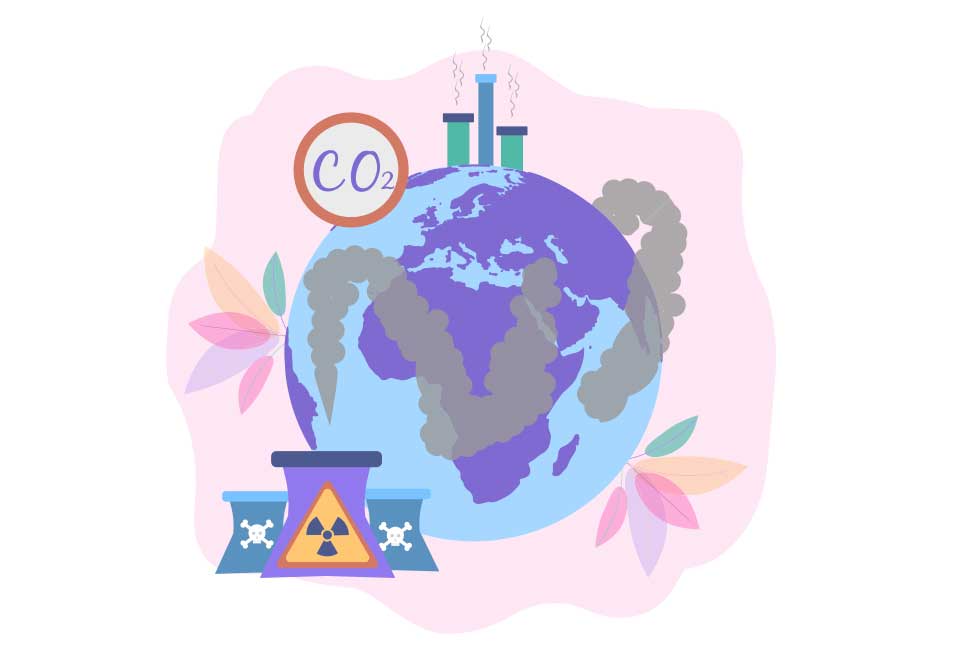
A new study shows that decarbonizing the world's 1'000 largest emitters would bring about a third of the emissions reduction needed to achieve the 1.5-degree target. The costs are estimated at between 7.5 and 10.5 trillion US dollars.
A trend reversal in global CO2 emissions is possible, according to a new study. The 1'000 most emission-intensive industrial plants worldwide are owned by 406 companies and together emit around 8 gigatons of carbon dioxide (Gt CO2) annually. If these plants were fully decarbonized, around a third of the emissions reduction required by 2030 to achieve the Paris climate target of a maximum temperature rise of 1.5 degrees would already have been achieved. Depending on the technology used, the costs for this would amount to between 7.5 and 10.5 trillion US dollars. These are the findings of the «Global Carbon Restructuring Plan» study, for which experts from Roland Berger analysed the world's 1000 largest emitters and identified options for their decarbonization as well as the costs involved.
Around 160 companies are responsible for 80% of emissions
According to the Emissions Gap Report 2023, the world must reduce its annual CO2 emissions by 24 gigatons by 2030 to achieve the 1.5-degree target. «The 1'000 industrial plants with the highest emissions alone emit 8 gigatons a year - a third of the emissions reduction needed», says Martin Hoyer, Partner at Roland Berger. And he continues: «More than half of this is attributable to just 40 companies, and a full 160 companies are responsible for 80%. This shows the huge climate protection potential of concerted action to decarbonize these major emitters.»
There are various technology options
There are various technology options for decarbonizing the plants under consideration, as the analysis shows: These range from switching to renewable energies, nuclear energy or natural gas to capturing the carbon dioxide produced by the continued use of fossil fuels and storing it (CCS).
Depending on the decarbonization solution, the costs for complete decarbonization vary. Nuclear energy and the switch to gas are the most expensive options at around USD 10.5 trillion each over the period from 2025 to 2050. This is followed by CCS at 10.3 trillion US dollars. Switching to renewable energies is the cheapest option at USD 7.5 trillion. Spread over time, this would mean annual costs of USD 0.3 to 0.4 trillion. In comparison, this would be less than 20% of global expenditure on research and development (USD 2.3 trillion) in 2021, for example, the study summarizes.
The majority of the production facilities analyzed come from energy generation
The analysis by the Roland Berger experts shows that over three quarters (77%) of the emissions of the top 1'000 come from the electricity generation sector, 18% from iron and steel production and 3.5% from the oil and gas industry. In regional terms, most of the 1'000 plants are located in China (54%) and India (13%), followed by the USA (10%) and Europe (3%). This regionally uneven distribution means that countries are affected very differently by the costs of decarbonization: China and India, for example, would have to spend between 18% and over 30% of their gross domestic product, while the USA and Europe would only have to spend between 2% and 5%.
«The 406 owners of the 1'000 plants we examined each have to analyze what options they have against the individual background of their environment and their specific markets», says Hoyer. «They all face the same questions: Which technology is best? How can security of supply be guaranteed? Where will the financial resources come from? Collaborations between government and business players in the areas of technology and research and development could significantly increase the potential and speed of decarbonization activities», Hoyer is convinced.
Energy sector has some catching up to do in decarbonization
The commitment to the transition to green production varies depending on the sector and region. According to the study, decarbonization plans are in place for only 11% of the energy production facilities identified. Europe shows the greatest progress here, with plans already in place for half of the European energy facilities analyzed. In the USA, this is the case for just under a third (29%) of the facilities. Among non-electricity facilities, oil and gas companies are the most active, along with iron and steel companies.
The full study can be found at this link.
Roland Berger is a strategy consultancy of European origin with a strong international presence. As an independent firm, solely owned by partners, it has 51 offices in all major markets. It has around 3'000 employees.